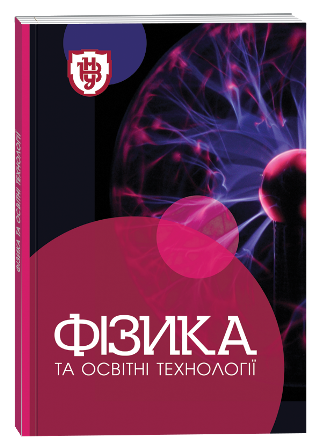TEACHING HIGH SCHOOL STUDENTS CRITICAL THINKING TECHNIQUES USING ANALYSIS OF AN ARTICLE ABOUT CALCULATING THE PERIOD OF PENDULUM OSCILLATIONS IN THE CASE OF ARBITRARY AMPLITUDES
DOI:
https://doi.org/10.32782/pet-2022-1-6Keywords:
critical thinking, mathematical pendulum, amplitude of oscillations, period of oscillations, average velocity, average value of the functionAbstract
This article is devoted to the problem of developing critical thinking in high school students. The relevance of the problem is confirmed by the recent increase in the number of scientific and methodical publications on this topic, the consolidation of the phrase “critical thinking” in normative documents related to the organization of education in Ukraine, the appearance of a number of dissertation studies related to the development of critical thinking by means of various educational subjects. The purpose of this article is to show on an example how the knowledge and skills acquired in mathematics, computer science and physics lessons, as well as in extracurricular classes, can become a tool for critical thinking in the analysis of a text on physics. An article published in a scientific journal was chosen as an example. The novelty of our investigation consists, first of all, in the fact that we managed to find a rather successful article for our purposes, published as a scientific publication, which became the subject of critical analysis in extracurricular classes. The uniqueness of this article is that it allowed high school students in a real situation to apply a number of critical thinking techniques, which they were introduced to in previous classes, using specially designed exercises. Using these techniques, not only the final formula for the oscillation period, but also one of the key intermediate formulae was analyzed. In addition, the students will get to know the techniques of critical thinking that are new to them. The most interesting thing is that it is possible to prove the falsity of the very method proposed by the authors of the analyzed article for deriving the formula for the oscillation period of a mathematical pendulum in the case of arbitrary amplitudes. From the conducted research, we concluded that it makes sense to continue the search for published texts on physics that would be interesting from the point of view of using them as methodical material for teaching high school students critical thinking techniques based on the integration of knowledge from physics, mathematics, and computer science.
References
Даценко І.П., Лозовенко О.А., Мінаєв Ю.П. Критичне і понятійне мислення: чи не є це різними назвами для вищого рівня розвитку мислення? Збірник наукових праць Кам'янець-Подільського національного університету ім. Івана Огієнка. Серія : Педагогічна. 2016. Вип. 22. C. 131–134.
Ляшенко О.І., Терещук С.І. Критичне мислення як технологія компетентнісного навчання фізики. Збірник наукових праць Збірник наукових праць Кам'янець-Подільського національного університету ім. Івана Огієнка. Серія: Педагогічна. 2017. Вип. 23. С. 162–166.
Минаев Ю.П., Тихонская Н.И., Цыганок М.Н. Углубление знаний о свойствах реальных газов при работе с альтернативными учебниками. Физика в школе. 1999. № 5. С. 43–46.
Мінаєв Ю.П., Тихонська Н.І., Шалатов Д.С. Організація навчального дослідження залежності періоду коливань математичного маятника від амплітуди : The ХХVI International Scientific and Practical Conference «Problems of science and practice, tasks and ways to solve them». July 05-08, 2022, Helsinki, Finland. P. 261–267.
Орлянський О.Ю. Розвиток критичного мислення учителя фізико-технічного профілю на аналізі помилок у завданнях з фізики. Збірник наукових праць Кам'янець-Подільського національного університету ім. Івана Огієнка. Серія : Педагогічна. 2017. Вип. 23. C. 66–70.
Починкова М.М. Формування критичного мислення майбутніх учителів початкової школи у процесі професійної підготовки : дис. … доктора пед. наук : 13.00.04. Старобільськ, 2021. 572 с.
Про Освіту : Закон України від 05 вересня 2017 р. № 2145-VIII / Верховна Рада України. URL: https://zakon.rada.gov.ua/laws/show/2145-19#Text (дата звернення: 20.07.2022).
Сальник І.В., Томашевська Г.П. Розвиток критичного мислення учнів у процесі вивчення сучасних питань фізики. Наукові записки. Серія : Проблеми методики фізико-математичної і технологічної освіти. Кропивницький, 2017. Вип. 12(III). С. 129–136.
Талалай В.В., Кочетков А.В., Федотов П.В., Талалай М.В. Определение периода больших колебаний маятника (до 90°). Интернет-журнал «Науковедение». Том 8. № 5(2016).
Терещук С.І., Мартинюк О.С. Розвиток критичного мислення при вивченні фізики у ліцеї. Збірник наукових праць Кам'янець-Подільського національного університету ім. Івана Огієнка. Серія : Педагогічна. 2021. Вип. 27. С. 84–87.
Терно С.О. Розвиток критичного мислення старшокласників у процесі навчання історії. Запоріжжя : Запорізький національний університет, 2011. 275 с.
Цьома Н.С. Розвиток критичного мислення майбутніх кваліфікованих робітників у процесі вивчення інформаційних дисциплін : автореф. дис. … канд. пед. наук : 13.00.04. Суми, 2020. 22 с.
Critical Thinking: A Statement of Expert Consensus for Purposes of Educational Assessment and Instruction. Executive Summary «The Delphi Report». By Dr. Peter A. Facione, California Academic Press, 1990.
Datsenko I., Lozovenko O., Minaiev Yu. and Zadoian M. Paradoxes of Stiff Springs. Physics Education, 2019, 54, 065003.
Kochetkov A. V., Chelpanov I. B., Fedotov P. V. Determination of the period of large vibrations of a pendulum in elementary functions. Measurement Techniques, Vol. 59, No. 6, September, 2016. P. 610–613.
Lipman, M. Critical thinking: What can it be? Educational Leadership, 1988. P. 38–43.
Lozovenko O., Minaiev Yu., Lutai R. Dzhanibekov effect in a physics classroom. Physics Education, 2022, 57, 015019.








